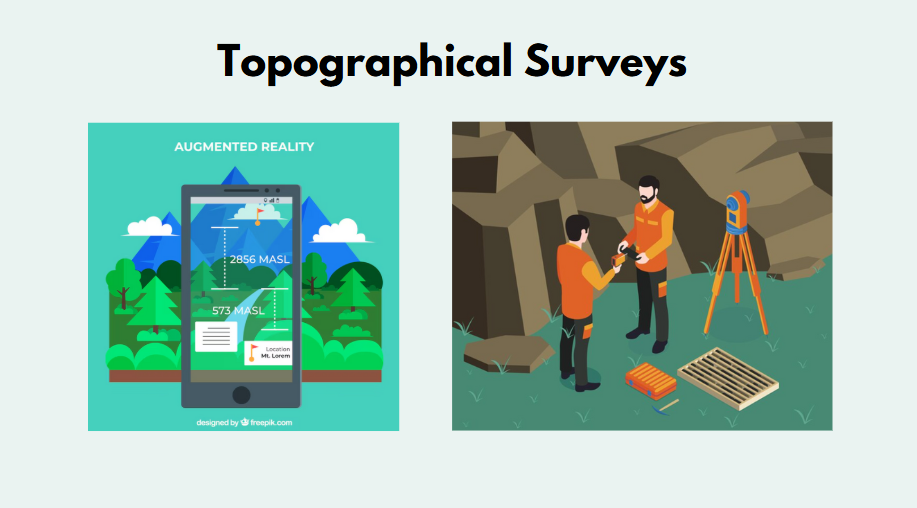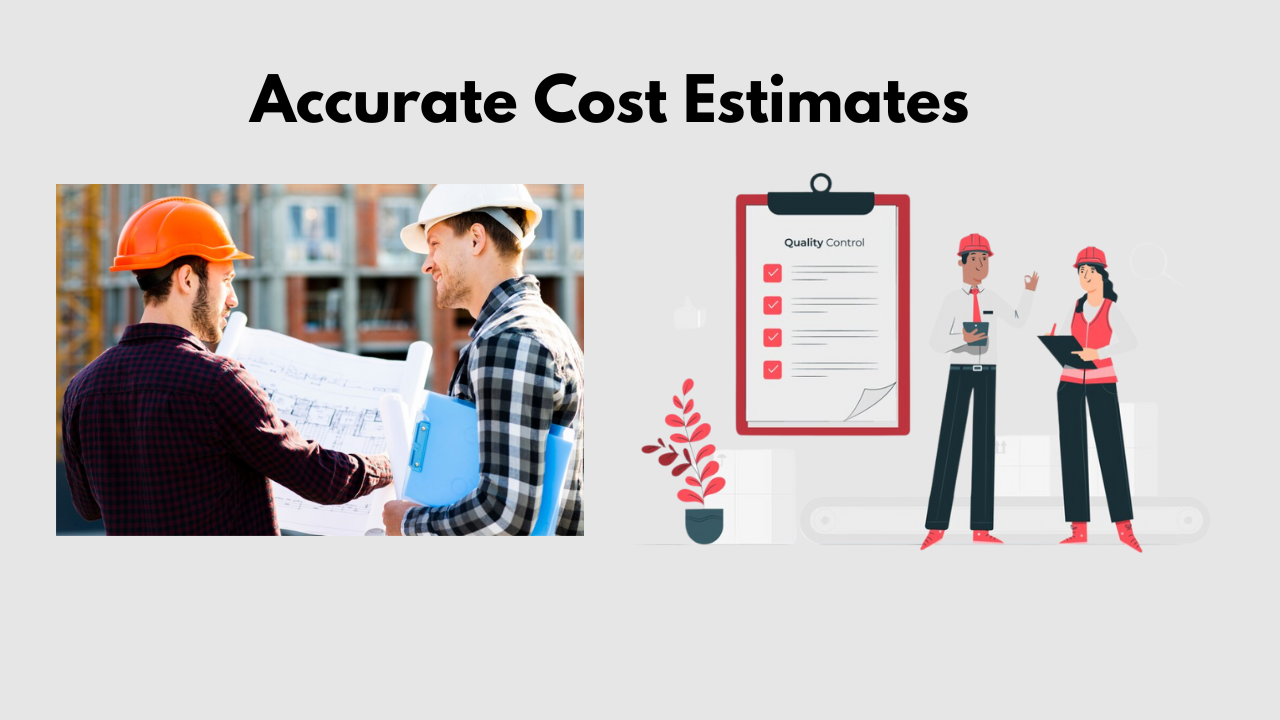Have you ever started a construction project and suddenly faced delays or budget issues because the land wasn’t exactly what you expected? It’s frustrating, and you’re not alone.
In fact, studies indicate that nearly 75% of projects experience cost overruns, primarily due to poor initial planning and inaccurate cost estimations. These overruns can escalate to 20-30% over the original budget. That’s where topographic survey data comes in.
By giving you a clear, detailed picture of the land’s features, it helps you plan your project more accurately, avoid costly mistakes, and stay on schedule. In this guide, we’ll show you how to use topographic survey data to streamline your construction planning, saving you time, money, and stress.

What is a Topographic Survey?
A topographical survey, or land survey, offers a detailed and precise map of both the natural and man-made features of a particular piece of land. It captures important details like:
- Contours
- Vegetation
- Structures
- Elevation changes
- Other unique landscape features
This survey provides more than just a flat map; it creates a three-dimensional view of the terrain, which is crucial for industries like construction planning. Let’s explore topographical surveys further and see how they can benefit your projects.
What Key Insights Do Topographical Surveys Provide?
Think of these topographic surveys as getting a detailed blueprint of the land’s shape and features but with a lot more depth. To fully appreciate how a topographical survey can benefit your project, let’s break down the key components that make it so valuable.
Elevation Data
At the heart of a topographical survey is the precise measurement of elevation. Imagine trying to build a structure on uneven ground without knowing the exact height of different areas, things could go wrong quickly.
Elevation data provides the vertical information needed to understand how high or low different points are across the site. This is especially important for flood risk assessments, drainage planning, and overall project feasibility.
Contour Lines
Next, we have contour lines. These are lines that connect points of equal elevation and give you a clear view of the land’s shape. If you’ve ever tried to design or build on a hilly or uneven site, you know how tricky it can be.
Contour lines reveal slopes, valleys, and peaks, making it easier to plan structures that work with the natural landscape instead of fighting against it. This also helps in understanding the water flow across the site, which is crucial for proper drainage.
Structural Details
A topographical survey isn’t just about natural features, it also includes mapping any existing structures on the land. This could be buildings, roads, utility lines, fences, and even things like power poles.
Knowing where these things are located helps you avoid costly mistakes like accidentally disrupting a power line or building too close to an existing structure. It’s all about creating a full picture of what’s on the site before you start digging into your plans.
Vegetation and Land Cover
The survey also takes note of vegetation and land cover, things like trees, shrubs, grass, and even wetlands. Why is this important? Well, understanding what’s already there can help with environmental assessments and preserve the natural ecosystem.
Suppose you’re planning a green space or just want your construction to blend in well with nature, knowing where and what kind of vegetation exists will help you plan accordingly. Plus, it might impact things like zoning regulations or local environmental laws.
Water Bodies
Water bodies, such as rivers, lakes, ponds, or even small streams, are another key part of the survey. Knowing where water is located and how it behaves is critical for a variety of reasons.
For one, it helps you assess flood risks and plan for proper drainage systems. If you’re building near water, it’s also important to understand things like water flow, soil erosion, and potential impact on nearby structures. A topographical survey can help ensure you’re not building in a flood-prone area, saving you from costly damages down the line.
Surveying Tools and Technologies
To gather all of this data efficiently, modern surveying tools and technologies are used. We at 360 Land Surveying use advanced equipment like Leica Robotic Total Stations, GNSS (Global Navigation Satellite Systems), and 3D laser scanning to align the perfect topographic survey data.
These tools ensure that the data collected is precise and can be represented in either 2D or 3D formats. Technology has come a long way, making it possible to survey vast areas quickly and accurately, something that would have been incredibly time-consuming in the past.
How a Topographic Survey Benefits Construction and Engineering Projects
Let’s explore some key benefits of getting a topographic survey done before purchasing a site to build your future haven.
Better Design and Planning – Adapting to the Land’s Natural Features
Topographic surveys provide a clear picture of the land, including slopes, contours, and natural features. With this data, architects and engineers can create designs that adapt to the site’s conditions rather than forcing unnecessary changes. This minimizes construction challenges and reduces costs.
For example, a housing project planned on uneven terrain can integrate natural slopes into its design. By understanding the site beforehand, engineers can avoid expensive excavation and design a layout that works with the land, not against it.
Accurate Cost Estimates – Plan Your Budget Wisely with Topographic Survey
Unexpected site challenges often lead to budget overruns, but a topographic survey ensures there are no surprises. By identifying site conditions such as slopes, drainage issues, or underground features early, project teams can create more accurate budgets that account for necessary adjustments.
Knowing exactly what you’re working with allows for better allocation of resources, helping avoid sudden cost increases during construction. For instance, identifying poor drainage beforehand means you can plan for the proper solutions right from the start.

Ensuring Compliance – Meeting Regulations Without Delays
Topographic surveys help identify features like wetlands, floodplains, or protected land that are subject to environmental regulations. By revealing these details, the survey ensures projects comply with local, state, and federal laws before construction begins.
Let’s say, you’re planning a commercial site near a lake. A topographic survey might reveal part of the land lies in a flood zone. With this information, project teams can obtain the necessary permits and design with flooding risks in mind, avoiding legal penalties or project delays.
Risk Mitigation – Spotting Problems Before They Arise
Topographic surveys help project teams identify risks such as unstable slopes, poor drainage, or underground utilities early in the planning phase. Addressing these issues upfront reduces the chances of costly delays or safety hazards during construction.
For instance, hitting an underground utility line during excavation can cause serious delays and unexpected costs. With a survey, such risks are mapped in advance, allowing contractors to work safely and efficiently.
So, Why Might You Need a Topographic Survey for Your Next Project?
If you’re planning a construction project, a topographical survey is essential for a smooth, efficient process. Without one, you’re basically guessing about the land’s true nature, which could lead to mistakes, delays, or even safety hazards.
It’s not just about the “what” but the “how” and the “where” of your construction project. So, why risk getting it wrong when a topographical survey can ensure you get it right from the start?
This is a tool that saves you time, money, and a lot of headaches, so the next time you’re starting a project, make sure you have a topographic survey in your back pocket. And with our land surveying services at 360 Land Surveying, we can assure you a perfect, safe construction for your new haven, beforehand.